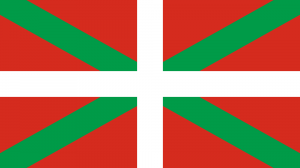Language/Basque/Grammar/Regular-Verb-Conjugation
Introduction
In this lesson, we will learn how to conjugate regular verbs in Basque in the present tense. Verbs are the most important part of a sentence, and mastering their conjugation is essential for effective communication. We will also cover some cultural information and interesting facts about the Basque language.
Regular Verb Conjugation
In Basque, verbs have different forms depending on the subject of the sentence. There are three main kinds of verbs in Basque: -ar, -er, and -ir verbs. Regular verbs in Basque follow a specific pattern of endings to indicate the subject of the sentence in the present tense.
Conjugation Patterns
Let's take the -ar verb "ikusi" (to see) as an example. Here is its present tense conjugation pattern:
| Person | ikusi |
|---|---|
| ni | ikusiRikoa // (I see) |
| hi | ikusiRik // (you see - informal) |
| hura | ikusiDU // (he/she/it sees) |
| gu | ikusiGu // (we see) |
| zu | ikusiZu // (you see - formal) |
| zuek | ikusiZue // (you see - plural) |
| haiek | ikusiDute // (they see) |
As you can see, the verb stem "ikus-" is followed by different endings depending on the subject of the sentence. The endings are "-rikoa", "-rik", "-du", "-gu", "-zu", "-zue", and "-dute".
Here is the present tense conjugation pattern for the -er verb "joan" (to go):
| Person | joan |
|---|---|
| ni | joanNORat (I go) |
| hi | joanNORanz (you go - informal) |
| hura | joanDA (he/she/it goes) |
| gu | joanGARREN (we go) |
| zu | joanNORZ (you go - formal) |
| zuek | joanNAZTE (you go - plural) |
| haiek | joanDIRA (they go) |
Again, you can see the verb stem "joan-" followed by different endings depending on the subject of the sentence. The endings are "NORat", "NORanz", "DA", "GARREN", "NORZ", "NAZTE", and "DIRA".
Finally, here is the present tense conjugation pattern for the -ir verb "hitz egin" (to speak):
| Person | hitz egin |
|---|---|
| ni | hitz eginDNLO (I speak) |
| hi | hitz eginDNZ (you speak - informal) |
| hura | hitz eginDU (he/she/it speaks) |
| gu | hitz eginDNAGU (we speak) |
| zu | hitz eginDZU (you speak - formal) |
| zuek | hitz eginDZUE (you speak - plural) |
| haiek | hitz eginDUTE (they speak) |
As you can see, the verb "hitz egin" is split into two words for conjugation purposes. The same pattern of endings we saw in the previous two examples is used here as well.
Usage
To use a regular verb in a sentence, you need to match the subject of the sentence with the proper ending of the verb. Here are a few examples:
- "Ni ikusirikoa" (I see)
- "Hura joan da" (He/she/it goes)
- "Gu hitz egin dNAGU" (We speak)
In Basque, the subject of the sentence is often omitted if it is clear from the context of the conversation. So, the sentence "ikusirikoa" could mean "I see" or "You see" depending on the context.
Cultural Information and Interesting Facts
Basque verbs are conjugated based on the pattern of the verb type, rather than on the person who is performing the action. This is in contrast to many other languages, such as English, where verb endings change based on the person.
The Basque language is unique in Europe because it is not related to any other known language. It has been suggested that Basque is a remnant of the original languages spoken in Europe before the arrival of Indo-European languages.
Conclusion
In this lesson, we have learned how to conjugate regular verbs in Basque in the present tense, as well as some cultural information and interesting facts about the Basque language. Remember to practice and use the verb conjugation patterns in context to improve your communication skills. Zorte on! (Good luck!)

